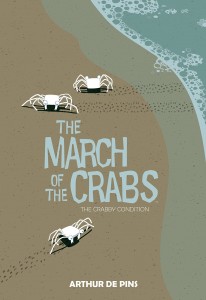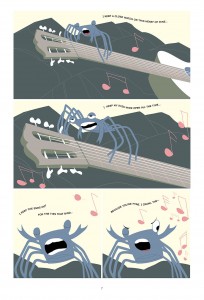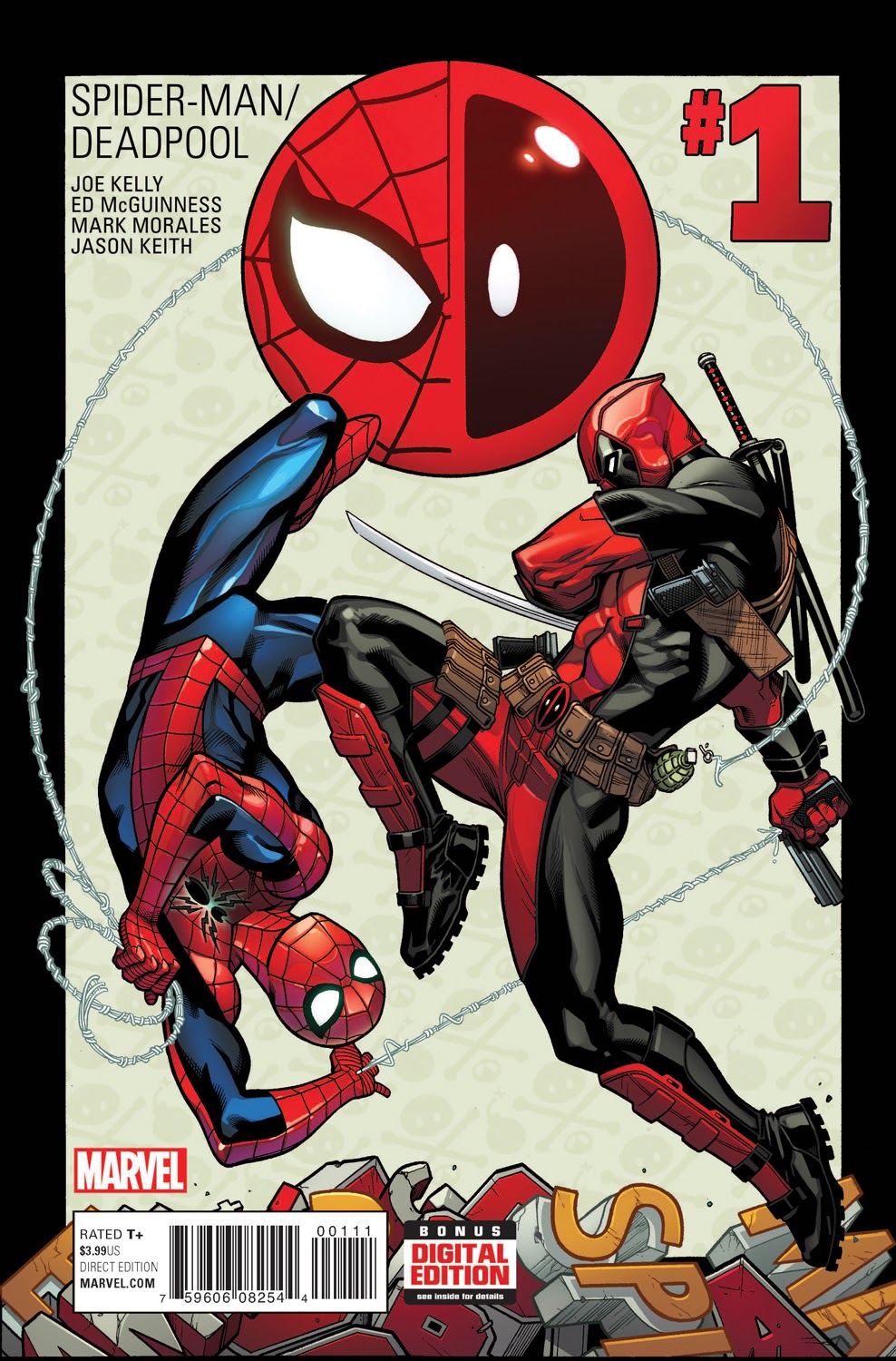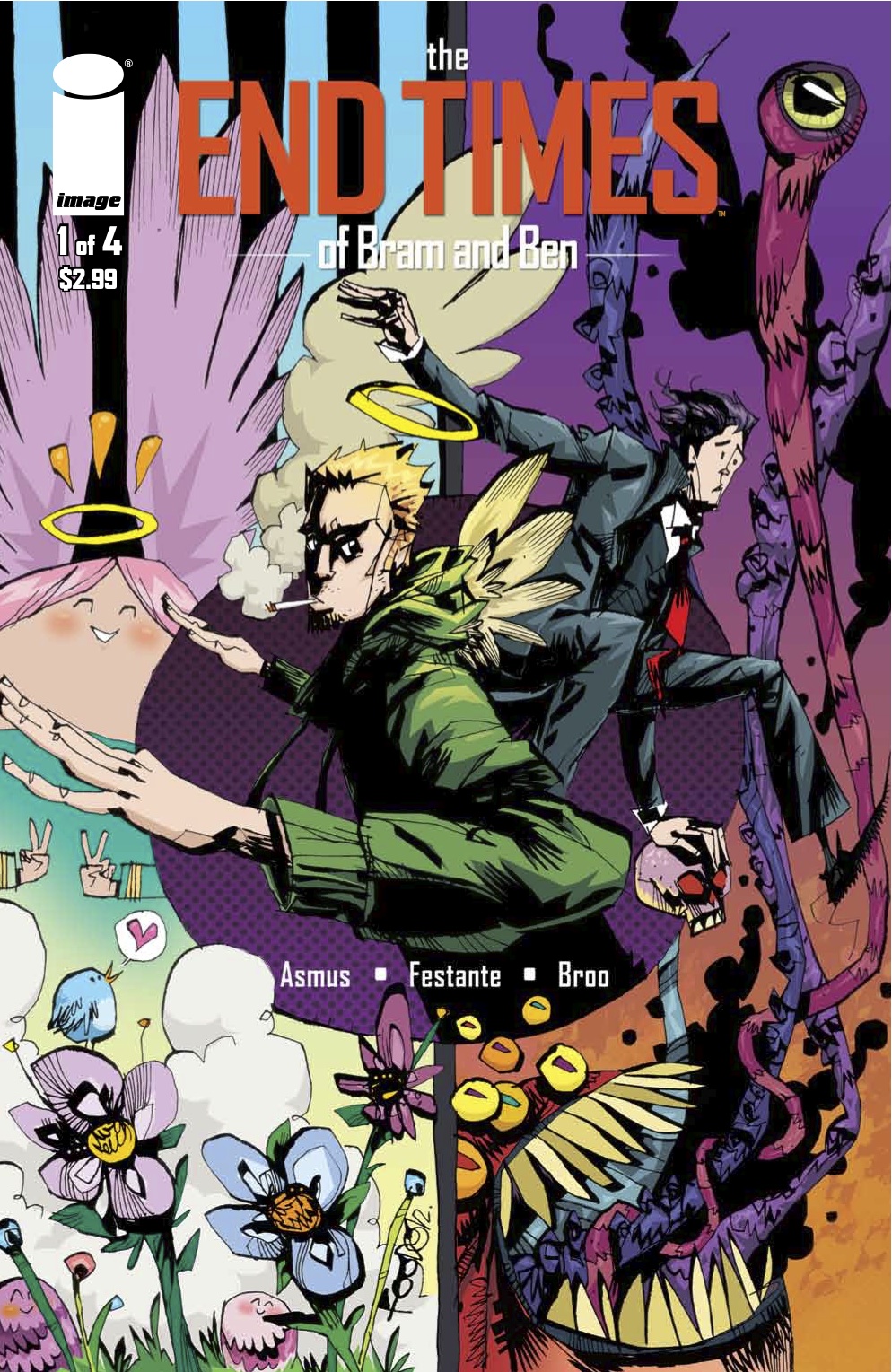March of the Crabs Vol. 1: The Crabby Condition
Written and Illustrated by Arthur de Pins
Translation by Edward Gauvin
Letters by Deron Bennett
Review by Joey Braccino
“Cancer Simplicimus Vulgaris… The marbled crab. The only species that can only move in one direction… This crab follows a single path from birth to death. Never straying. Never able to change track.

Can you imagine only moving along a straight line?”
So I’ll be honest—I picked up March of the Crabs – Vol. 1: The Crabby Condition almost exclusively, entirely, unequivocally because of the title.
I’ve read and reviewed a lot of weird stuff in my tenure here at Talking Comics (check the archives), but when I saw a full-length graphic novel about crabs—those strange little sea creatures that people insist on eating despite the fact that there really isn’t much meat in them—and that it was published by the Archaia imprint at BOOM! and that it was actually a French translation, I thought to myself, that is so much weird that I most definitely a book I need to read and write about.
And I did.
And I’m super glad that I did, because Arthur de Pins’ March of the Crabs is a wonderfully engaging and unique comic book experience.
According to his biography at the end of the book, De Pins is a French animator and filmmaker. He previously released a successful short film entitled La Revolution des Crabes (Revolution of the Crabs), which inspired this new series of graphic novels (March of the Crabs is intended as the first of three volumes). De Pins also previously released an acclaimed graphic novel entitled Zombillenium for NBM Publishing. His diverse background in media results in a truly innovative approach to the comics medium, most evident in his artistic aesthetic.
The Archaia description of de Pins’ work constantly alludes to his Art Deco inspiration, which is a valid stylistic comparison, but I sense even more the influence of animation and animated film studios like Disney and Pixar in March of the Crabs. Given the subject matter, the comparisons to Finding Nemo will be inevitable. Visually rich while still maintaining a distinct sense of digital whimsy and cartoon fantasy, March of the Crabs is a riveting, gorgeous comic book to look at.
De Pins’ story in March of the Crabs is deceptively deep. The premise is simple: a group of Marble Crabs—the only species on the planet that can only move side to side, forever cursed to travel along a predetermined without the ability to move forward or change direction—experience the trials and tribulations of a beach in France. The Marble Crabs come into conflict with the larger, brutish Brown Crabs, human beings, and other threats on the beach. When our heroic crabs discover a means to carry each other and therefore change direction, things get absolutely wild. Themes of movement, progress, and free will come into play as our crabs, with their newfound mobility, decide to give themselves names (they didn’t before because they never did anything unique) and make plans for travel and adventure and beach domination. De Pins also brings in environmental issues through various human characters and conflicts, which ultimately intersect with our Crabs in a crazy, unexpected climax.

One of the more intriguing elements of the narrative is the interaction between humans and crabs. The crabs view the humans as satanic, fanged giants; the humans view the crabs as diminutive, beady-eyed playthings. De Pins illustrates the different perspectives brilliantly, and he also clearly delineates what each species can comprehend regarding the other. The moments of interaction are some of the funnier, engaging moments of the text.
Another fascinating part of March of the Crabs is its status as a translated graphic novel. Originally written in French, March of the Crabs was translated by Edward Gauvin, not the author de Pins himself. I always find translations intriguing in their nuance. Gauvin does a wonderful job maintain a sense of wonder and colloquialism in the dialogue. The crabs call each other “dude” and “smartypants” in such an endearing, comical way that I wouldn’t be able to identify the translation if it weren’t noted on the first page.
Verdict
Check it out! I loved March of the Crabs. It’s a whimsical tale of talking crabs breaking out of the bounds of nature and leaping ahead through sheer force of will. If that isn’t a heartwarming, fist-pumping story, well then I just don’t know anymore. And it’s talking, singing sea creatures! How could you say no!?
One note: despite it’s content, however fun and wonderful it may be, March of the Crabs is not an All-Ages book! Probably more 12+ if I had to put a number on it. Maybe older.
***
March of the Crabs: Vol. 1 – The Crabby Condition will be released on March 31st for Archaia and BOOM! Studios. You can order it here!!!











